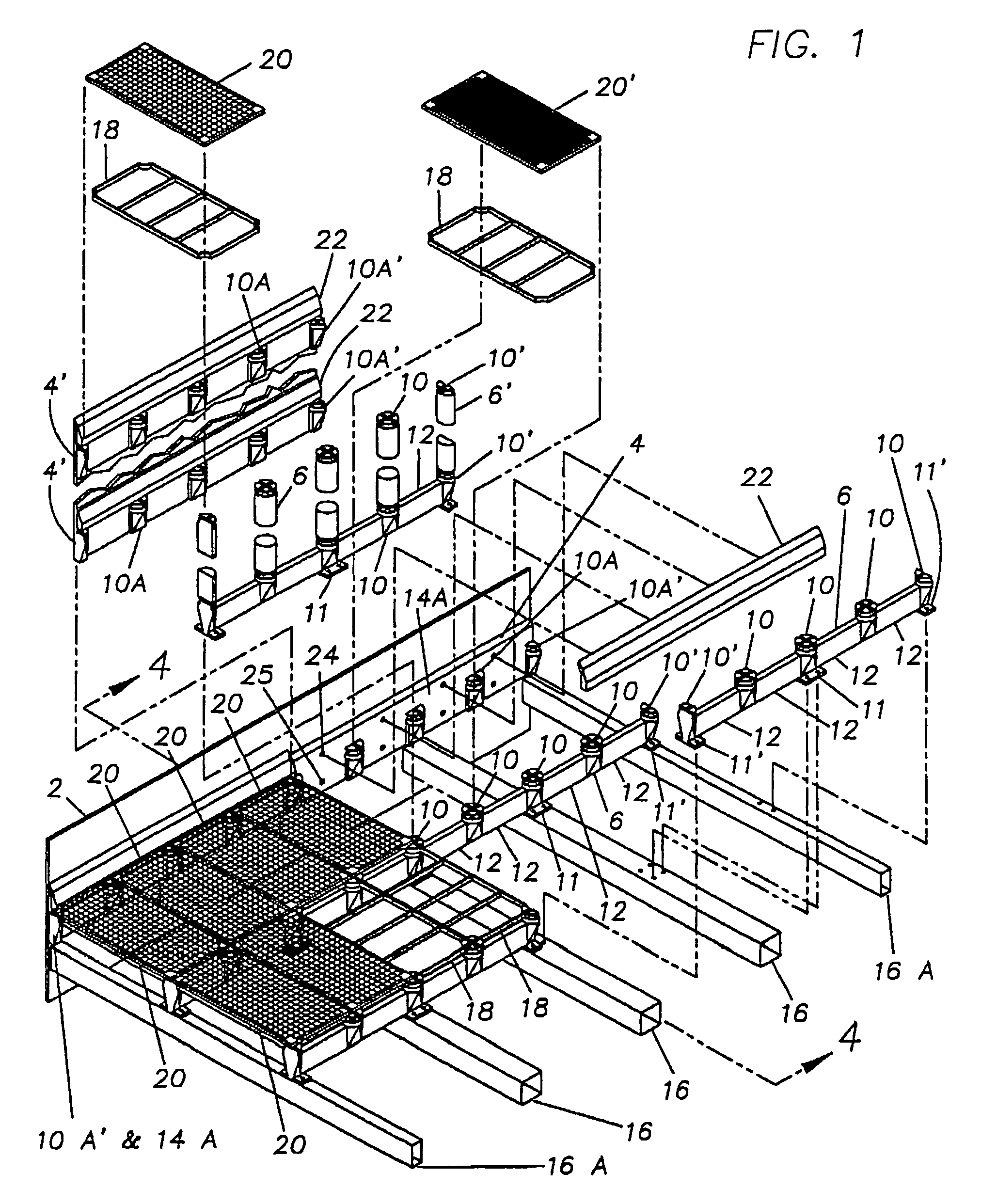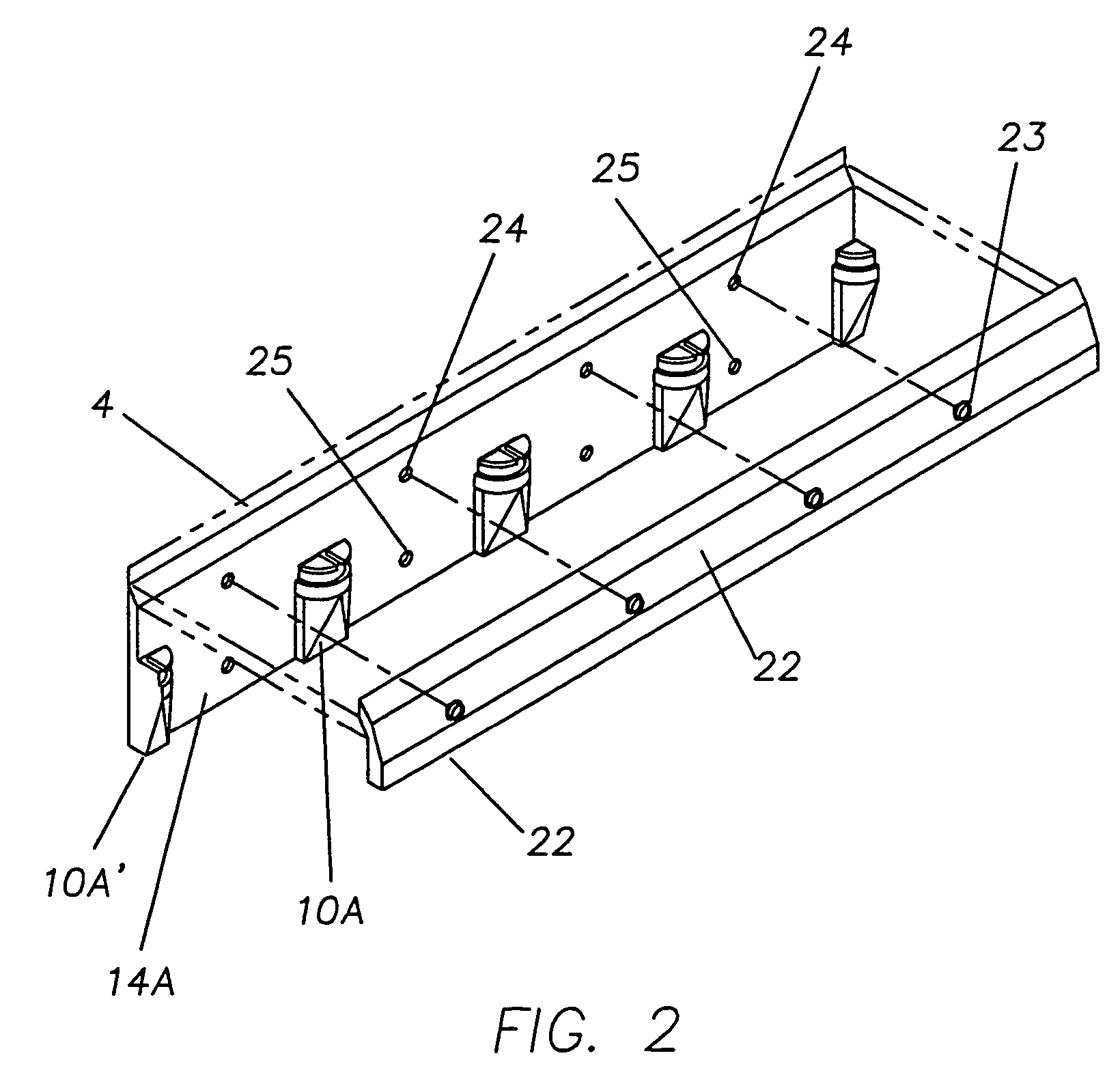Module for screening or diverting particulate material and method of producing the module
a technology of particulate material and module, which is applied in the field of modules, can solve the problems of increasing the overall height increasing the cost and complexity of the screening apparatus, and requiring another expensive deviation from the industry standard practice, and achieves the effect of convenient and quick attachmen
- Summary
- Abstract
- Description
- Claims
- Application Information
AI Technical Summary
Benefits of technology
Problems solved by technology
Method used
Image
Examples
Embodiment Construction
[0059]Referring now to FIG. 1, an overall perspective view is depicted of a deck assembly, denoted “1”, having a particulate flow screening system, having a top side 2, with easily replaceable screening modules according to a preferred embodiment of the present invention. A deck assembly is shown having a sidewall 50, underlying support members 16, and end support members 16A. The support members 16 and 16A support the weight of the particulate screening system and the particulate material being screened.
[0060]A preferred embodiment of the particulate screening system of this invention includes a wall mounting post assembly 4 (or 4′ in the multi-screen version of an alternative embodiment) having one or more half posts 10A, one or more quarter posts 10A′, and one or more wall mounting pieces 14A. Bolts secure each wall-mounting piece 14A to the sidewall 50 through boltholes 25. The shield 22 is connected to the wall-mounting piece 14A by being interlockingly snap fit into holes 24. ...
PUM
 Login to View More
Login to View More Abstract
Description
Claims
Application Information
 Login to View More
Login to View More - R&D
- Intellectual Property
- Life Sciences
- Materials
- Tech Scout
- Unparalleled Data Quality
- Higher Quality Content
- 60% Fewer Hallucinations
Browse by: Latest US Patents, China's latest patents, Technical Efficacy Thesaurus, Application Domain, Technology Topic, Popular Technical Reports.
© 2025 PatSnap. All rights reserved.Legal|Privacy policy|Modern Slavery Act Transparency Statement|Sitemap|About US| Contact US: help@patsnap.com



